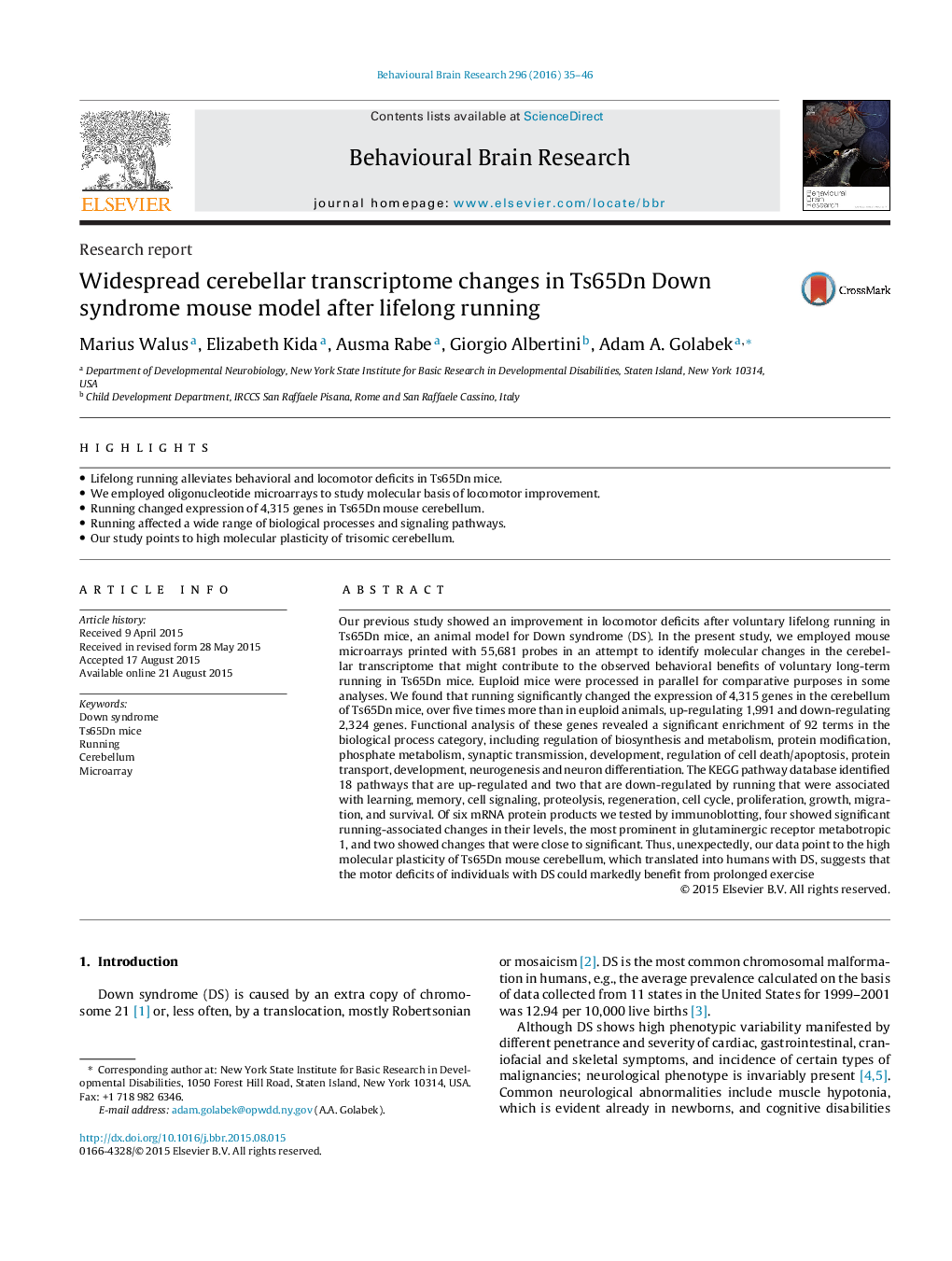| کد مقاله | کد نشریه | سال انتشار | مقاله انگلیسی | نسخه تمام متن |
|---|---|---|---|---|
| 4312317 | 1612936 | 2016 | 12 صفحه PDF | دانلود رایگان |

• Lifelong running alleviates behavioral and locomotor deficits in Ts65Dn mice.
• We employed oligonucleotide microarrays to study molecular basis of locomotor improvement.
• Running changed expression of 4,315 genes in Ts65Dn mouse cerebellum.
• Running affected a wide range of biological processes and signaling pathways.
• Our study points to high molecular plasticity of trisomic cerebellum.
Our previous study showed an improvement in locomotor deficits after voluntary lifelong running in Ts65Dn mice, an animal model for Down syndrome (DS). In the present study, we employed mouse microarrays printed with 55,681 probes in an attempt to identify molecular changes in the cerebellar transcriptome that might contribute to the observed behavioral benefits of voluntary long-term running in Ts65Dn mice. Euploid mice were processed in parallel for comparative purposes in some analyses. We found that running significantly changed the expression of 4,315 genes in the cerebellum of Ts65Dn mice, over five times more than in euploid animals, up-regulating 1,991 and down-regulating 2,324 genes. Functional analysis of these genes revealed a significant enrichment of 92 terms in the biological process category, including regulation of biosynthesis and metabolism, protein modification, phosphate metabolism, synaptic transmission, development, regulation of cell death/apoptosis, protein transport, development, neurogenesis and neuron differentiation. The KEGG pathway database identified 18 pathways that are up-regulated and two that are down-regulated by running that were associated with learning, memory, cell signaling, proteolysis, regeneration, cell cycle, proliferation, growth, migration, and survival. Of six mRNA protein products we tested by immunoblotting, four showed significant running-associated changes in their levels, the most prominent in glutaminergic receptor metabotropic 1, and two showed changes that were close to significant. Thus, unexpectedly, our data point to the high molecular plasticity of Ts65Dn mouse cerebellum, which translated into humans with DS, suggests that the motor deficits of individuals with DS could markedly benefit from prolonged exercise
Journal: Behavioural Brain Research - Volume 296, 1 January 2016, Pages 35–46